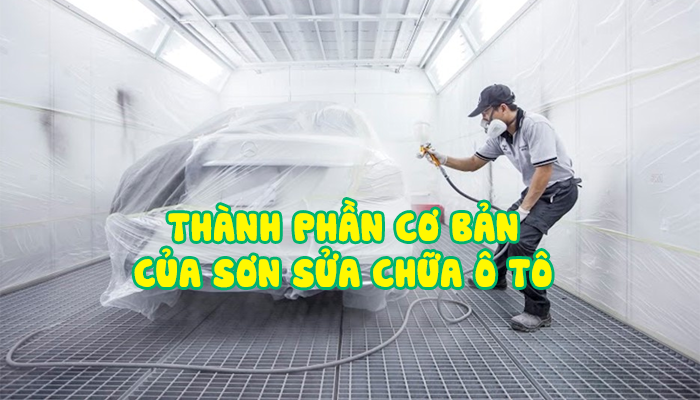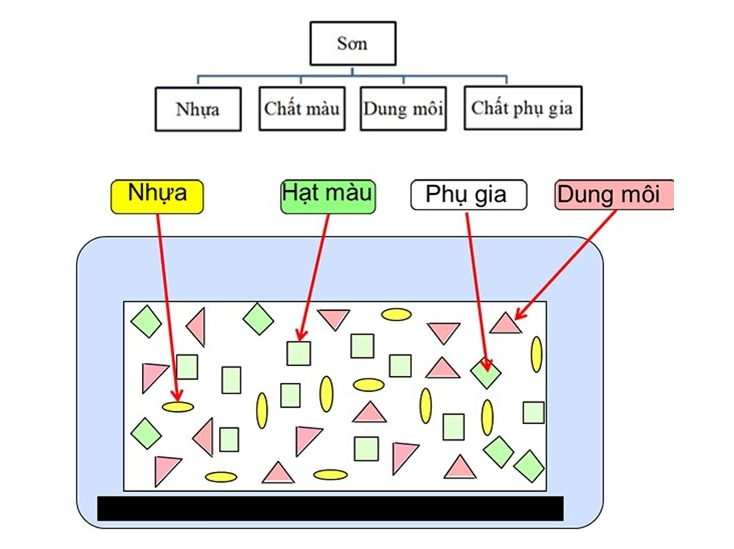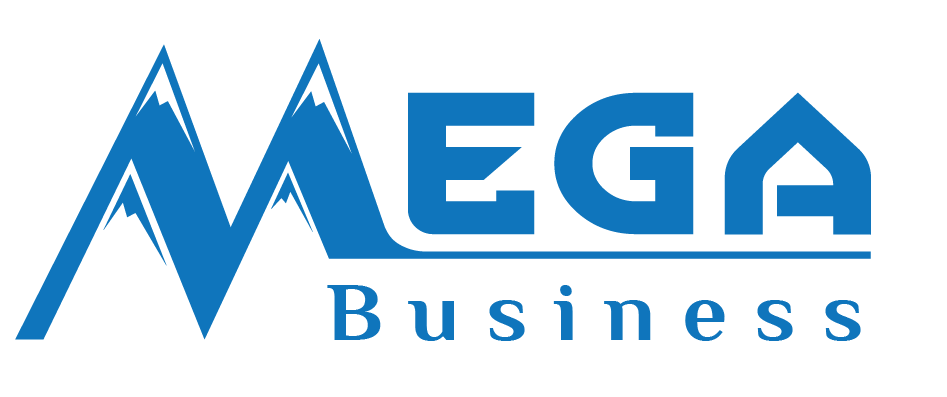
BASIC COMPOSITION OF AUTOMOTIVE TOUCH-UP PAINT
Automotive touch-up paint would be mixed with ingredients including resins, pigments, solvents, additives, according to certain concentrations.
MOST COMMON MISTAKES WHEN APPLYING EPOXY
AUTOMOTIVE COATINGS MARKET
What's the Difference Between Polyurethane, Varnish, Shellac and Lacquer?
NO SELF-HEALING PAINT
BASIC COMPOSITION OF AUTOMOTIVE PAINT
Automotive refinish paint would be mixed with ingredients including resins, pigments, solvents, additives, according to certain concentrations. Then, the mixture would be diluted with solvent or thinner to adjust the viscosity to match the paint condition. In the case of two-component coatings, a curing agent will be added.
Resin (film-forming agent) accounts for 40-60%
Resin is the main component of paint, in liquid, viscous and transparent form, creating a film on the surface of the material after painting. The resin directly impacts the properties (adhesion, hardness, solvent resistance, and weather resistance) of the paint. It also affects paint quality such as gloss, drying time, etc. Resin is classified as follows:
- By origin: natural resins, synthetic resins.
- By chemical nature: phenol-formaldehyde resin, alkyd resin, amine resin, epoxy resin, polyester resin, vinyl resin, acrylate resin, silicone resin.
- By physical state: thermoplastic resin (TPA), thermosetting plastic (TSA)
>> Get advice on transferring paint production technology <<

Pigments account for 7-40%
Features
- Pigments are usually in powder form
- Insoluble in solvents and resins
- No adhesion. However, it can adhere to painted surfaces along with resins and other components in the paint
Applications
- Provide hiding property
- Prevents the impact of ultraviolet rays on the surface below.
- Somes improve physical properties of coating such as scratch-resistant
The pigment has several types as follows: colored pigments, light-colored pigment, filler pigment, antioxidant pigment, gloss-reducing pigment, etc. Some pigments are very toxic such as lead paint, which has been replaced by less toxic substances such as white titanium (titanium dioxide) coated with silicon or aluminum oxide.
>>>Watch more: nguyên liệu sản xuất sơn gỗ PU 2K trong nhà <<
Solvents and diluents
The solvent is a liquid used to dissolve resins, pigments, and fillers. Blend them to form a paint mixture.
- Thinner is used to dilute the base paint
- Both the solvent and the paint thinner evaporate when drying and do not remain in the paint layer.
In fact, since there are many different resins used in paints, there are also many solvents/diluents to dissolve those resins and are specifically specified to be used with the respective paint. In addition, some diluents contain different effects and have different mixing ratios; so that the user can select the type of diluent according to the most appropriate evaporation rate for the particular ambient temperature.
Additives account for 0-5%
The purposes of additives:
- Catalyze or improve some properties of paint.
- Improve some weather resistance of paint film.
- In some special cases it is used to prevent damage to the paint film during storage.
Depending on the function, it can be classified into the following types of additives:
- Additives surface tension
- Anti-foam additive
- Anti-UV additives
The above is the basic information about the composition of automotive touch-up paint. Mega Vietnam Chemicals has currently been developing a set of raw materials from famous brand names. With a team of experienced technicians, Mega is always a reliable partner and accompanies you to success.
>> Click HERE for the best paint chemicals on the market <<
Contact
MEGA VIETNAM
Office address: Floor 2-A2-IA20, Nam Thang Long Urban Area, Pham Van Dong Street,
Dong Ngac Ward, Bac Tu Liem District, Hanoi City, Vietnam
Tel: (+84) 24 375 89089; Fax: (+84) 24 375 89 098
Website: megavietnam.vn
Hotline: 1800.577.728 Zalo: 0971.023.523





